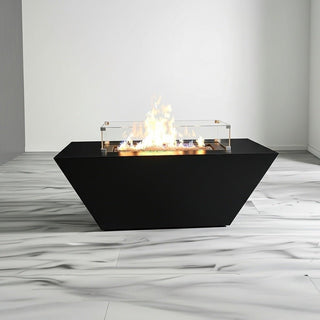Choosing the right fuel for your fire feature is as important as the design itself. Each option—wood, gas, or bioethanol—creates a distinct experience, influencing everything from ambiance to maintenance. Understanding these differences helps you select the fire pit that perfectly complements your lifestyle and outdoor environment.
Wood Fire Pits
Wood fire pits offer an unmistakable sensory experience. The crackle, aroma, and warmth of real wood create a traditional and nostalgic atmosphere that draws people together. However, they require dry firewood, regular ash removal, and careful placement away from structures due to sparks and smoke. Some regions restrict open wood fires, so always check local regulations before installation.
Gas Fire Pits
Gas fire pits are the most convenient and low-maintenance option. Powered by natural gas or propane, they ignite instantly, offer adjustable flame heights, and provide consistent, smoke-free performance. Professional installation is recommended to ensure proper ventilation and safety compliance. Gas fire pits are ideal for those who value control, ease of use, and a modern aesthetic with clean, linear flames.
Bioethanol Fire Pits
Bioethanol fire pits burn a renewable, plant-based fuel that produces no smoke or soot. Their portability and sleek design make them a great solution for smaller spaces or environments where gas or wood is not practical. While they do not produce as much heat as gas or wood, they excel in visual appeal and environmental friendliness, requiring only occasional refilling of bioethanol fuel.
Choosing the Right Option
Your choice depends on the experience you want to create:
-
Ambiance: Wood offers authenticity, gas provides convenience, and bioethanol adds modern elegance.
-
Maintenance: Gas and bioethanol options require less upkeep than wood-burning models.
-
Installation: Gas may require professional setup, while bioethanol and wood are typically plug-and-play.
-
Environment: Bioethanol is the cleanest option, followed by gas, while wood offers a more natural experience at the cost of emissions.
-
Regulations: Always review local fire codes and clearance requirements before installation.
No matter which fuel you choose, a well-crafted fire feature brings warmth, atmosphere, and connection to any space. Modofire designs with every fuel type in mind, combining form, function, and craftsmanship to ensure lasting performance and beauty.


